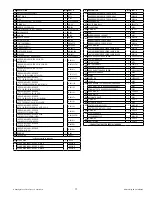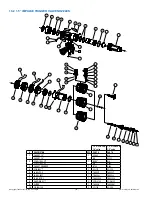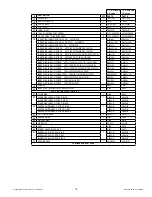
©Copyright Task Force Tips LLC 2011-2018
LIG-010 May 29, 2018 Rev05
4
1.0 MEANING OF SAFETY SIGNAL WORDS
A safety related message is identified by a safety alert symbol and a signal word to indicate the level of risk involved with a particular
hazard. Per ANSI standard Z535.6-2011, the definitions of the four signal words are as follows:
DANGER
DANGER indicates a hazardous situation which, if not avoided, will result in death or serious
injury.
WARNING
WARNING indicates a hazardous situation which, if not avoided, could result in death or serious
injury.
CAUTION
CAUTION indicates a potentially hazardous situation which, if not avoided, could result in minor
or moderate injury.
NOTICE
NOTICE is used to address practices not related to physical injury.
SAFETY INSTRUCTIONS (or equivalent) signs indicate specific safety-related instructions of procedures.
2.0 SAFETY
DANGER
An inadequate supply of nozzle pressure and/or flow will cause an ineffective stream and can
result in injury, death, or loss of property. See flow graphs or call 800-348-2686 for assistance.
WARNING
The nozzle may be damaged if frozen while containing significant amounts of water. Such
damage may be difficult to detect visually and can lead to possible injury or death. Any time the
nozzle is subject to possible damage due to freezing, it must be tested by qualified personnel
before being considered safe for use.
WARNING
This equipment is intended for use by trained personnel for firefighting. Their use for other
purposes may involve hazards not addressed by this manual. Seek appropriate guidance and
training to reduce risk of injury.
WARNING
Failure to restrain nozzle reaction can cause firefighter injury from loss of footing and/or stream
protection. Nozzle reaction will vary as supply conditions change: such as opening or closing
other nozzles, hose line kinks, changes in pump settings, etc. Changes in spray pattern or
flushing will also affect nozzle reaction. The nozzle operator must always be prepared in the
event of these changes.
WARNING
If nozzle gets out of control or away from operator, retreat from nozzle immediately. Do not
attempt to regain control of nozzle while flowing water. Injury from whipping can occur.
WARNING
Water is a conductor of electricity. Application of water on high voltage equipment can cause
injury or death by electrocution. The amount of current that may be carried back to the nozzle
will depend on the following factors:
• Voltage of the line or equipment
• Distance from the nozzle to the line or equipment
• Size of the stream
• Whether the stream is solid or broken
• Purity of the water
1
1 The Fire Fighter and Electrical Equipment, The University of Michigan Extension Service, Fourth Printing 1983. Page 47
CAUTION
Fire streams are capable of injury and damage. Do not direct water stream to cause injury or
damage to persons or property.



















